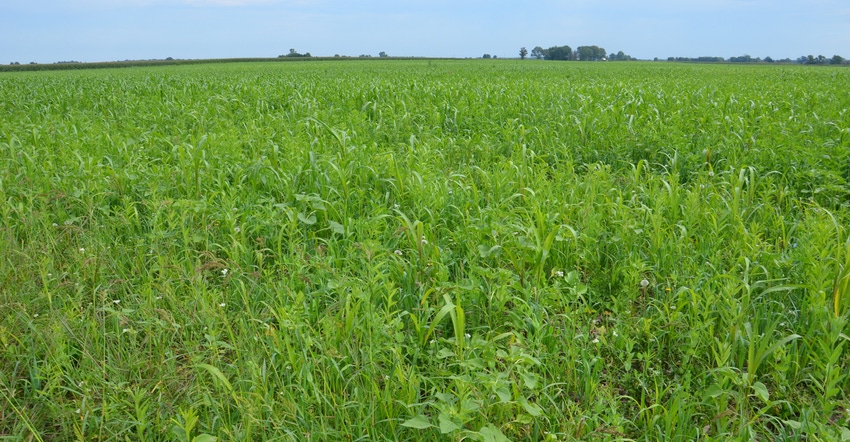
A press release issued Sept. 9 by USDA on behalf of Secretary of Agriculture Sonny Perdue caught several people off guard. Others have misinterpreted what was included in the somewhat vague press release, which focused on disaster-type payments.
“Most programs mentioned in the release apply to parts of the country hit hard in 2017 and 2018 by wildfires, hurricanes and floods — not to the wet spring experienced in the Midwest,” says Steve Brown, director of the Indiana Farm Service Agency.
The part of the release causing the most confusion, and causing a flood of phone calls to Indiana county FSA offices, relates to prevented planting. The release announces what Brown calls a “top-off” program for those with prevented planting acres, which provides an additional payment besides what farmers may collect through crop insurance or for planting cover crops on those acres.
“The program referred to in that release was for crops that were to be planted before Jan. 1, 2019, long before our problems began,” Brown says. Unfortunately, the sentence specifying this was buried in the last paragraph.
“This did not apply for us. So, there is no sign-up at FSA offices for such a program now,” Brown says. “However, we’ve received word that such a program for prevented planted crops in Indiana and other Midwest states for spring 2019 is in the works. We will let people know if we receive official word. The other question is who will administer it; if may be RMA [Risk Management Agency], who handles crop insurance, not FSA.”
Other programs
There was already confusion in some ag communities about payment programs before the Sept. 9 USDA release. Indiana Prairie Farmer received a tip from a reader that there is a “secret” USDA program, but you have to visit your FSA office to find out about it. As it turns out, it’s no secret. It’s the Market Facilitation Program, Brown says.
“Yes, you do need to come in and sign up for it, and many people have,” he notes. “If you haven’t, do so right away. You will get paid on your certified acres of corn, soybeans, wheat and other crops based on the payment rate set in your county. We’ve already paid out lots of money through this program. There is also a program for hog producers, so hog producers should check with their local office, too.”
For crops, you receive 50% of the county rate payment per acre now, with the rest scheduled to come later if USDA determines there is still a need. If your county rate is $55 per acre and you certify 1,000 acres, you would be eligible for a payment of $27,500 now (half of a $55,000 total potential payment).
There are also questions about disaster declarations and disaster payments, Brown says. Again, Indiana producers are not eligible for disaster payments discussed in the Sept. 9 USDA release.
“So far, 77 counties have been declared as disaster counties in Indiana for 2019,” Brown says. “Since contiguous counties are also eligible, that would amount to every county in the state. These declarations are based on hay and wheat, not corn and soybeans.
“The governor asked for 88 of 92 counties to be declared as primary disaster counties, but officials are waiting to see how corn and soybean harvest turns out before ruling on those declarations.”
What disaster declarations for 2019 mean right now is that if you’re in such a county, you’re eligible for low-interest loans, Brown says. There are currently no programs that would provide additional payments for disasters suffered by Indiana producers in 2019.
About the Author(s)
You May Also Like




